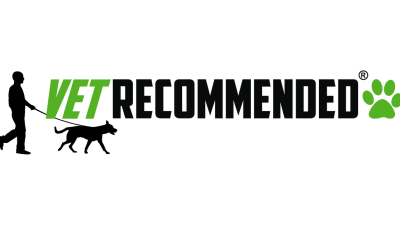
Choosing the right pet insurance can feel overwhelming, but with the right information, you can make an informed decision that protects your furry friend and your wallet. One of the optimal ways to start is by considering vet recommended pet insurance options. Veterinarians often have valuable insights into which insurance offerrs offer the optimal coverage and service. This article will guide you through the process of selecting the optimal insurance for your pet, highlighting key attributes, top offerrs, and essential considerations.
Why Vet Recommendations Matter for Pet Insurance.
When it comes to pet insurance , seeking vet-recommended options can be incredibly beneficial. Veterinarians have firsthand experience with various insurance offerrs and understand which ones offer thorough coverage, efficient claims processing, and reliable customer service. Their insights can guide you toward policies that genuinely support your pet’s health needs.
Vets often recommend insurance companies based on their experiences with pre-authorization processes, coverage for specific treatments, and overall ease of use. They can also advise on the types of policies that optimal suit varied breeds and health conditions. For instance, some breeds are predisposed to certain genetic issues, and a vet can suggest insurance that adequately covers these potential problems.
Moreover, vet-recommended insurance plans often have networks of preferred offerrs, making it easier to find quality care for your pet. This can be particularly helpful if you’re new to an area or unsure where to find the optimal veterinary services. By trusting your vet’s recommendations, you can streamline the process of finding the right insurance and ensure your pet receives the optimal possible care.
Key attributes to Look for in Vet-Recommended Pet Insurance.
When evaluating vet-recommended pet insurance , several key attributes should be considered to ensure thorough coverage and peace of mind. First and foremost, understand the policy’s coverage limits. Some policies have annual or lifetime limits, which could restrict the amount of money you can claim for your pet’s healthcare. Ensure the limits are sufficient to cover potential major medical expenses.
Secondly, examine the deductible and co-insurance amounts. The deductible is the amount you pay out-of-pocket before the insurance coverage kicks in, while co-insurance is the percentage of costs you share with the insurance company after the deductible is met. A lower deductible typically means higher premiums, and vice versa. select a balance that aligns with your budget and risk tolerance.
Another crucial facet is the policy’s exclusions. Most pet insurance policies exclude pre-existing conditions, but some may also exclude certain breeds or specific types of treatments. Read the fine print carefully to understand what is and isn’t covered. Additionally, consider whether the policy covers chronic conditions, hereditary issues, and alternative therapies like acupuncture or chiropractic care.
Finally, check the claims process. A smooth and efficient claims process is essential for a positive insurance experience. Look for insurance companies that offer online claims submission, quick processing times, and clear communication. Reading reviews and testimonials from other pet owners can offer valuable insights into the claims experience with varied offerrs.
Top Vet-Recommended Pet Insurance offerrs.
Several pet insurance offerrs consistently receive high ratings and recommendations from veterinarians. These companies stand out due to their thorough coverage, reliable customer service, and efficient claims processing. One such offerr is Trupanion , known for its straightforward policies and coverage of 90% of eligible veterinary costs after the deductible is met. Trupanion also offers the unique attribute of paying veterinarians directly, reducing the out-of-pocket expenses for pet owners.
Another highly recommended offerr is Embrace Pet Insurance. Embrace offers customizable policies with varying deductible and reimbursement options, allowing pet owners to tailor their coverage to their specific needs and budget. They also cover pre-existing conditions if the pet has been symptom-complimentary for a certain period.
Healthy Paws is another popular choice among vets and pet owners. They are known for their unlimited annual benefits and thorough coverage, including hereditary and congenital conditions. Healthy Paws also has a strong reputation for quick claims processing and excellent customer service.
ASPCA Pet Health Insurance is also frequently recommended, offering a scope of plans with varied coverage levels and deductible options. They offer coverage for accidents, illnesses, and hereditary conditions, and offer optional add-ons like preventive care coverage.
When choosing a offerr, it’s essential to compare quotes, coverage details, and customer reviews to find the optimal fit for your pet’s needs and your budget. Consulting with your veterinarian can offer additional insights and recommendations based on their experiences with varied insurance companies.
How to select the Right Pet Insurance for Your Pet.
selecting the right pet insurance involves careful consideration of your pet’s specific needs, your financial situation, and the policy details. Start by assessing your pet’s breed, age, and health history. Certain breeds are prone to specific health issues, and older pets may require more frequent veterinary care. Understanding these factors will help you determine the level of coverage you need.
Next, evaluate your budget. Pet insurance premiums can vary significantly depending on the coverage level, deductible, and reimbursement percentage. Determine how much you can comfortably afford to pay each month without straining your finances. Remember that a lower premium may mean higher out-of-pocket expenses when you need to file a claim.
Compare quotes from multiple insurance offerrs. Don’t just focus on the price; carefully review the coverage details, exclusions, and limitations. Pay attention to the deductible, co-insurance, and annual or lifetime limits. Consider whether the policy covers chronic conditions, hereditary issues, and alternative therapies.
Read customer reviews and testimonials. These can offer valuable insights into the claims process, customer service, and overall satisfaction with varied insurance companies. Look for patterns in the reviews to determine potential red flags or areas of concern.
Finally, talk to your veterinarian. They can offer personalized recommendations based on their experiences with varied insurance offerrs and their understanding of your pet’s health needs. They can also help you navigate the complexities of pet insurance policies and select a plan that offers the optimal possible coverage for your furry friend.
Related Post : obie landlord insurance
Understanding the Fine Print: What to Watch Out For.
Before finalizing your pet insurance policy , it’s crucial to thoroughly understand the fine print and be aware of potential pitfalls. One of the most crucial facets to review is the policy’s exclusions. Most pet insurance policies exclude pre-existing conditions, meaning any health issues your pet had before the policy went into effect will not be covered. Be sure to disclose any known health conditions during the application process to avoid surprises later on.
Another common exclusion is coverage for routine or preventive care, such as vaccinations, flea and tick prevention, and routine dental cleanings. Some policies offer optional add-ons for preventive care, but these typically come at an additional cost.
Pay attention to waiting periods. Most pet insurance policies have a waiting period before coverage begins, typically ranging from a few days to a few weeks. This means that any illnesses or injuries that occur during the waiting period will not be covered.
Be aware of the policy’s renewal terms. Some insurance companies may boost premiums upon renewal, especially if you’ve filed claims during the previous policy period. Understand how your premiums are calculated and whether there are any factors that could cause them to boost.
Finally, review the policy’s cancellation policy. Understand the circumstances under which the insurance company can cancel your policy and what your rights are in such a situation. By carefully reviewing the fine print and asking querys, you can ensure you’re making an informed decision and avoid potential disappointments down the road.
Choosing the right pet insurance is a significant decision. By considering vet-recommended options, understanding policy details, and comparing offerrs, you can find a plan that offers peace of mind and financial security for your pet’s healthcare needs. Remember to regularly review your policy to ensure it continues to meet your pet’s evolving needs and your budget. With careful study and planning, you can offer the optimal possible care for your furry friend without breaking the bank.








